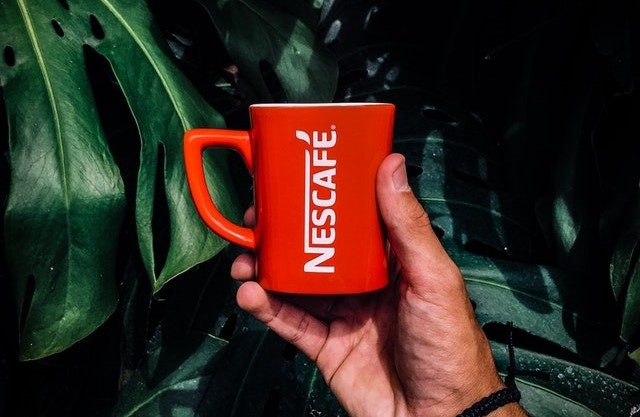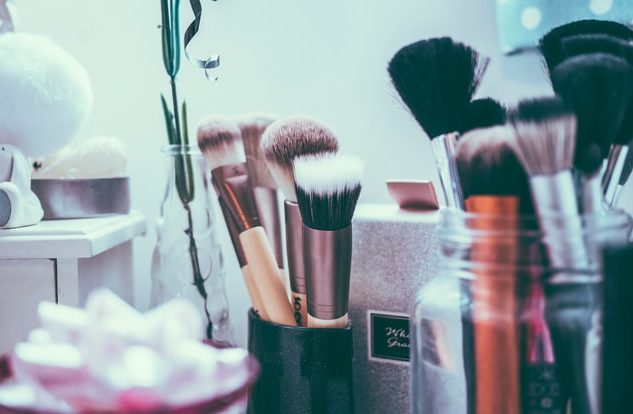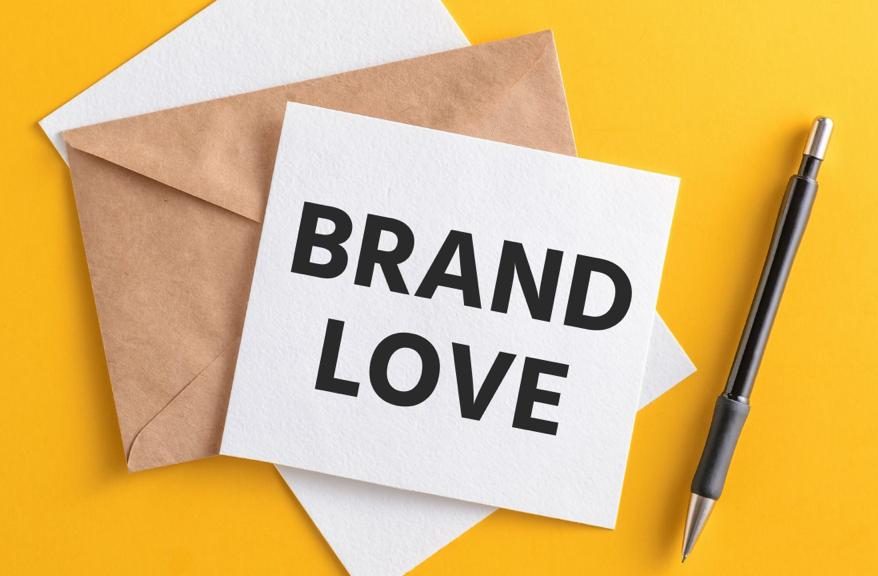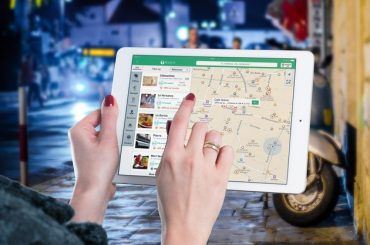Is a house party ever complete without Coke or “Khushiyon ki home delivery?” Can you imagine your daily run without your much-prized Nikes and Pumas? And is there such a thing as chilling without Netflix?
If you answered a no to any of the above questions, chances are, you have a grand romance with one of these brands! In translation, this means that these brands have transcended their role of a commercial service in your life to the point where they have become an intimate and integral part of your lifestyle.
This phenomenon of falling head over heels with a product or a company constitutes what marketers call ‘Brand Love.’ The brand becomes the very representation of the values and beliefs with which the consumer identifies.
Therefore, the consumers incorporate the brand into their personality and lifestyle. This connection is so strong that we no longer have eyes for competitors and start to defend the brand tooth and nail (like the classic old iPhone vs. Android battle).
What are the phases of Brand Love?
In a 2014 Harvard Business Review Article titled The Eight phases of Brand Love by Tim Halloran, the author discusses how marketers can incorporate Brand Love by following the eight phases framework.
McKinsey’s recent report titled The Rise of the Inclusive Consumer says that two out of three Americans shopping choices are being shaped by their social values and 45 percent of shoppers are what McKinsey defines as the Inclusive Consumer.
An inclusive consumer wants brands to engage diverse communities in all their actions. They are a large and influential block & brands need to think of innovative ways to reach these inclusive consumers.
Storytelling: The best strategy for brands
How Brands are creating Brand Love
We looked at Brands that are trying to develop Brand love using inclusion as the primary marketing strategy across all the eight phases of Brand Love:
1. Know yourself
Before a brand meets the consumer and breathes customer-centricity, it has to know itself well. Self-awareness is the key to forging a long-lasting relationship with consumers.
The world’s largest e-commerce brand Amazon is admired for its customer centricity so much so that it keeps an empty chair in every meeting & refers to it for taking essential decisions from a customer’s lens. It was no different when its Alexa range of speakers needed to be showcased for its utility and focus on including every customer, including persons with disabilities.
It hired Tarini Chaddha, a model with a learning disability from Atypical Advantage & the communication stuck an emotional chord with its customers for being welcoming to every stratum of the society.
2. Know your type
There is always an ideal consumer segment for a brand. The need for marketers is to identify those customers and their needs at a deeper level to match the offering, be it at a functional, emotional, or social level.
Armed with an inclusive idea on India’s 75th Independence Day, a mall in Bengaluru, The Galleria Mall by Brookfield Properties (Yelahanka) executed a live painting event on the theme of Independence from Global Warming, which artists did with disabilities. The Galleria Mall blended patriotism, sustainability & inclusion coherently & targeted retail shoppers who stand for these social values. To further strengthen recall and promote word-of-mouth marketing, the highest shoppers for the day got the chance to walk away with those live canvases.
3. Meet memorably
The memorability of the first few meetings between a brand and its consumer dictates the future relationship with the consumers. Hence, establishing connections through good memories will create the consumer’s desire to return to the brand.
A much-loved home décor brand Pepperfry wanted to focus on marketing its Pepperfry studios launched across the country with a memorable experience for its customers. The brand tied up with Atypical Advantage, where ten artists with disabilities painted live on their Glass facade across ten cities. The employees & the customers felt mesmerized by this novel gesture & it radically raised awareness on the abilities of Artists with Disabilities. They complimented their effort digitally by showcasing the story of Artists on the Autism spectrum, which its customers hailed.
4. Make it mutual
We want to tell the world whenever a relationship excites us. The relationship between consumers and brands is no different. The need is to identify the influencers of the category who can help spread the word. Influencers are increasingly bridging brands & consumers today.
When United Nations Volunteers (UNV), the flagship agency of the United Nations, wanted to acknowledge the efforts of its numerous volunteers & also trigger volunteerism in the country, it hired three outstanding performers with disabilities who were the perfect role models for United Nations as a brand. They entertained their volunteering base, inspired others to become a volunteer & gave a ray of hope to many others to live life with joy.
5. Deepen the connection
This stage creates the “made for me” experience for consumers. The brand and consumer relationship scales a new peak leading to commitment and loyalty.
Experiential lifestyle grooming brand The Man Company wants to be a thought leader & own the content, community & commerce funnel. When it was contemplating launching its Gentlemen campaign, it also wanted its message to reach out to all men with hearing disabilities & deepen the interaction with its community on what it stands for. Its Gentlemen video with a sign language version had gone viral & was widely appreciated by social media users.
6. Keep love alive
All relationships go through ups and downs. With passing time, brands need to “keep the spark” alive by energizing the relationship through action and innovation.
Brookfield Properties, one of the world’s largest real estate management firms, signed up Valuable 500, a commitment to inclusion at a board level, & made all its buildings accessible. To instill the concept of inclusion in its facilities, it commissioned a special edition Gratitude Series made by artists with disabilities. It symbolized hope & positivity in the times of the global pandemic & demonstrated how even a real estate player could innovate & keep the love alive.
7. Makeup
Like any relationship, even brands and consumers go through crises, sudden or stretched over time. The brands’ response to such situations dictates the course of the relationship with its loving consumer.
8. Break up
Relationships can fail. Brands either change to engage with a new consumer group or draw the lessons learned to develop new connections with consumers using a different product or service.
Fashion brand Arvind Limited wanted to re-energize its relationship with its consumers & evoke nostalgia with a feel-good story. It signed up a first-time model with a disability, Sachin Shetty & used the grand occasion of the big fat Indian wedding to demonstrate its “Fashion for All” beginning. It re-energized Arvind’s core segment of men, which often turns to the brand on the most intimate occasion of a wedding. The Arvind ad campaign, which was launched on the International Day of Persons with Disabilities, was celebrated for its unique storyline & progressiveness.
Brand Love Ecosystem
Brands often don’t know how to design similar offerings which can generate livelihood at scale, promote inclusion & make their brands relevant to inclusive consumers. Hence, they require support from enablers who act as the bridge. Brands, enablers, and customers together form the Brand Love ecosystem. For the ecosystem to thrive, enablers themselves have to stand for a cause and be impactful.
Atypical Advantage is one such enabler which is also India’s first & the only integrated platform to help companies find offerings from persons with disabilities purely based on merit. According to market intelligence firm Unearthinsight report, India has almost three crore people with disability (PwD) & a dismal 11 percent have been employed across the organized sector, unorganized sector, government-led schemes or are self-employed. Atypical Advantage works at the intersection of inclusion of such people & Brand Love.
From hosting performing artists, visual artists, job seekers & entrepreneurs, Atypical Advantage has scaled up its platform to have 500+ performing artists, 1000+ artworks & 75,000+ job seekers with disabilities who have collectively worked with 50+ brands to generate economic opportunity with dignity.
Brand Growth Matrix: A Perspective on Setting Brand Growth Objectives
What goes behind creating such enablers?
Atypical Advantage is the brainchild of Jamshedpur-based Vineet Saraiwala, who quit his rosy corporate job to launch it in December 2020 when he realized that lack of exposure creates the most significant divide in society.
Vineet Saraiwala is an IIM Bangalore Alumnus & an individual who has a rare degenerative eye condition Retinitis pigmentosa leaving him with only 10 percent sight. Despite such a condition, he has cycled over 5000 km & has run several Marathons. He is widely credited for making shopping accessible for disabled people in the country with his work with one of the largest retailers in India. Flipkart, too admired his courage & launched this documentary to celebrate the spirit of Vineet.
What’s the prize for such an authentic enabler?
If one thought that social impact doesn’t create investor interest, it is worth noting that Atypical Advantage has recently raised a whopping 1 Crore in less than a year of its inception. Few prominent investors include Mohan P Alexander, who co-founded Amba, a KPO services firm that was acquired by Moody’s; Rohan Bhansali, co-founder of Gozoop; Sadashiv Nayak, CEO of Future Retail Limited; Lokesh Bharwani, Founder – Mad over Donuts and Rajnish Dhall, Co-Founder at Micro Housing Finance Corporation.
It is always a win-win situation when an organization can create social impact investor interest and act as a means to make Brand Love. Such enablers can open new doors for innovative marketing in a world where consumers are increasingly asking what brands stand for.
(In conversation with Vineet Saraiwala, Founder – Atypical Advantage)
-AMAZONPOLLY-ONLYWORDS-START-
Also, check out other articles by the author

Nescafe Marketing Strategy: Lesson in Pull Marketing
Nescafe’s marketing strategy & mix includes inspirational advertising strategy, range of products, maintaining affordability, and utilizing Nestle’s strong distribution network.

Gillette Marketing Strategy of product innovation
Gillette has been a brand synonymous with men’s grooming for more than 116 years & is still going strong. Such was the genius brand marketing strategy of Gillette.

WOW Skin Science Marketing Strategy – Creating a niche in a multi-brand category
The marketing strategy of WOW Skin Science focused on analyzing consumer decision-making journeys and using tools of persuasion, which can be explained through a framework called AIDCAS

MyGlamm to Good Glamm: The Journey of an On-Demand Beauty Service
Myglamm once pivoted its business model to introduce beauty products to become a digital powerhouse. With Good Glamm group, it aims to become a large Digital FMCG Conglomerate.
-AMAZONPOLLY-ONLYWORDS-END-






